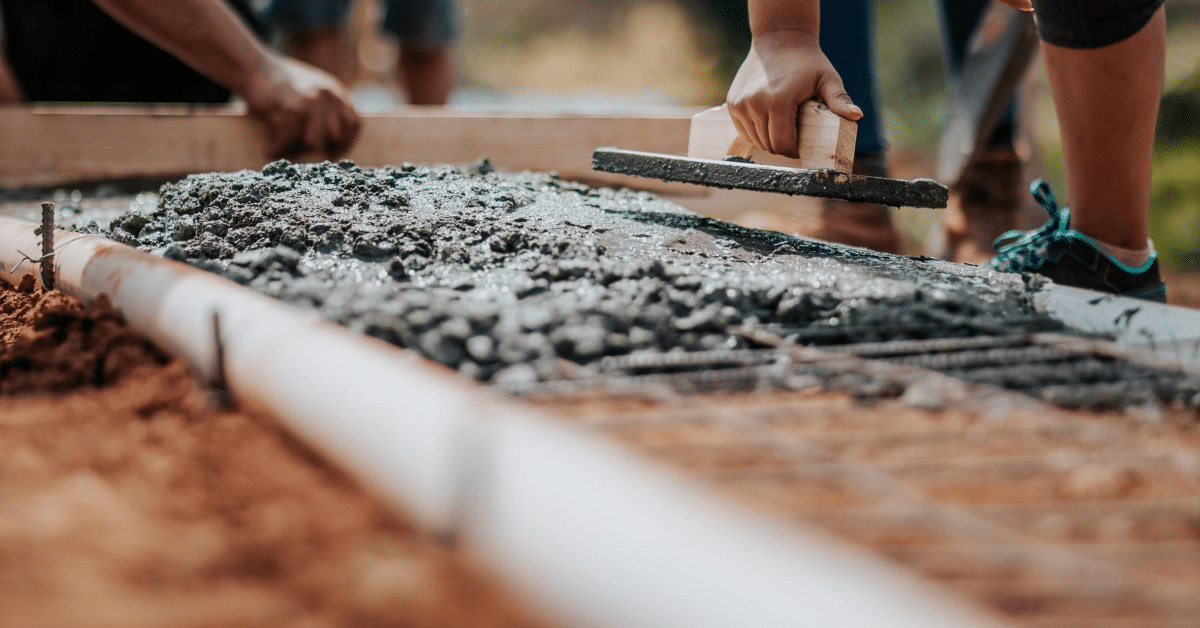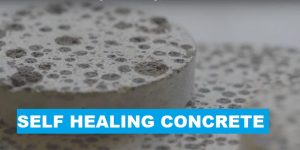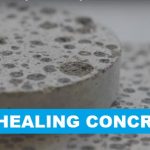Aggregate compacity or also widely known as packing density(aggregate packing ratio) is fairly new method in designing concrete mix. The method focuses on making sure the aggregate volume is optimized by minimizing the porosity within, so that the usage of cement can be reduced without sacrificing the performance of the concrete.
Though there has been many other concrete mix design method that has been in use for decades (if not centuries); this almost newly minted method gained traction due to its adaptability in designing for high strength concrete (high performance concrete, HPC), no-fines concrete, self-compacting concrete (SSC), as well as the normal grade concrete.
The Fundamental of Designing Concrete Mix
Before we dive into discussing further on aggregate compacity/packing density method; let us first understand the basics about concrete mix itself. The question is what exactly are we trying to achieve with designing a concrete mix for certain application.
Whenever, we come up with concrete mix design; the ultimate objective is to make sure the concrete once hardened and in-place must be able to achieve the targeted or intended strength. This is achieved by properly and carefully blending all the raw materials in correct and precise proportions.
In order to do this; we have few traditional methods where we would be able to calculate and estimate precisely (maybe almost precisely) the volume of each ingredients.
The basic ingredients of any typical concrete mix are:
- Cement, commonly known Ordinary Portland Cement (OPC)
- Fine Aggregates – sand is also categorized under aggregates. usually the one passing 4.75mm sieve.
- Coarse Aggregates – mostly the one retained on 4.75mm sieve and above.
- Admixture – comes in the form of synthetic and natural. These are used in concrete mix to improve and alter some of the properties as well as to enhance the performance.
- Water – without water we can’t finalize the concrete mix. Water plays very important role in concrete making. It has to be very accurately calculated; if too little then the cement hydration will not fully be achieved and the concrete will have work-ability issues, if too much then will cause concrete bleeding, segregation, etc.
Designing Concrete Mix with Aggregate Compacity
The idea of concrete mix is to optimize the aggregate content, so that cement usage can kept at minimum. Generally, concrete mix can be separated into two parts;
Part 1 – Total Aggregate Volume (mixture of fine and coarse aggregates)
Part 2 – The paste that going to bind the aggregates together to form a homogeneous material (the paste is obtain by mixing cement with water, and sometimes admixtures)
Aggregate Compacity
First fill up a container with coarse aggregate till it is full. Then with a rod (similar to the one you use for slum test), try to compact the aggregates. This will force the aggregates to move into the container and starts filling the gaps. Repeat this process few times till there is no more movement. You also could try vibrating method instead of the rod.
The next step is to fill up the container with sand till the container is fully covered. Now repeat the same process of compacting again, either by using the rod or vibrating. The sand will starts filling up all the remaining gaps between coarse aggregate. Once the gaps are mostly filled, you will start to notice stagnation in sand movement. This is the point where aggregates are fully compact (or the packing density is optimum).
Based on the weight of the material used to fill-up the container, we would be able to establish the aggregate compacity ratio (aggregate packing ratio).
Caution
Though the process seems to be quite simple and straight forward; it is actually a very tedious process. Most of the time and energy consuming process is getting the right compacity ratio (aggregate packing ratio). To get this right, you got to try out with various combination of aggregates-sand ratio (e.g. 90:10, 80:20, 70:30, etc). Even if get your ratio perfected in first attempt, you got to make sure you don’t change your source of aggregate supply. If there are any changes in your supply, then you got repeat the whole aggregate qualifying process.
Personally, I have done this more than thousand times. Whenever, I develop a mix design for self-compacting concrete, this is my go-to method to design the concrete mix. In order to minimize the impact of raw material source change, I’ve qualified and profiled compacity ratio (packing density ratio) from ten different quarries from four states.
Paste Volume
Now you need to use the cement paste to fill-up the container. Since the paste is slurry base, it will flow into any remaining voids and spaces that left unfilled by the coarse and fine aggregates. Once the container is full, then you can calculate (reverse engineering) to estimate the volume of each ingredients.
Once the Aggregate compacity ratio is established, then the volume of paste can be easily calculated. It is quite simple to estimate the total paste volume;
Total Volume is = 1
Assuming Aggregate ratio = 0.775
Therefore, paste volume = 1 – 0.775 = 0.225
Allowing, 10% extra paste volume for work-ability purpose = 0.225 * 10% = 0.2475
So, we need 0.2475 paste volume to fill-up the container (structure) with aggregate compacity of 0.775 .
This is just the ratio; we then need to use these ratios to calculate the exact quantity of material needed using the specific gravity (S.G.) value of each type raw materials.
The Traditional Method of Designing Concrete Mix
Nominal Mix (Standard Mix)
This is the most fundamental type of mix design and also the easiest. It doesn’t require any specific skill set, and that is why this method is generally preferred among small/medium scale contractor or concrete makers.
The ratio for main three ingredients is pre-determined in the work guideline, which usually provided by the local authority or public works department (PWD) of the region/country. These are provided in the form of ratios; for example, for grade 15 concrete the ratio is usually 1:2:4, which translates to 1 part of cement to 2 parts of fine aggregates (sand) to 4 parts of coarse aggregates. And the water should be adjusted according to expected work-ability.
This is a very simple method; but it is not recommended when comes to designing concrete mix for high strength or special purpose.
Design Mix Method (BS)
In this method, it all starts with first deciding the targeted strength. It is common believe that the higher the strength the more durable the concrete will be.
I am in strong opinion that it is not 100% true, but many still choose to believe that is the correct way of assuming the durability of concrete. Let us get into our discussion here without changing this discussion into a debate.
Mix design steps:
- Determine the mean target strength by using the specified characteristic 28-days strength and the actual/estimated quality control data for standard deviation.
- Select the appropriate water-cement ratio (w/c ratio) for your mean target strength with the empirical relationship between compressive strength and water-cement ratio. Chose the ratio based on the durability requirement as well.
- Estimate from table the entrapped air content based on the maximum aggregate size of aggregate.
- Determine the water content requirement from the table based on the expected workability and the maximum aggregate size.
- Use the table to determine the percentage of fine aggregates (sand)
- Adjust the water content accordingly based on the moisture content of the sand.
- Based on the w/c ratio and final water content volume, the cement content can be calculated. Make sure the volume of estimated is complying to the minimum cement criteria for durability purpose.
- The volume of coarse aggregate can be calculated by using the specific gravity of aggregates and cement, air content volume, water volume.
- Now with all the ingredients calculated, prepare the design mix sheet for trial mix.
- Prepare the concrete mix with the new recipe, and make three cubes of 150mm or 100mm. Cure in water and test at 28-days. If the cubes achieve the target strength, then you are good to go with the mix design. However, if you did not get the target strength, then time to make some adjustment to mix proportions then repeat the trial.
ACI Mix Design Method
In the ACI Design Method, most the value and parameters are estimated based on the tables, figures, and charts. Therefore, it is quite straight forward.
However, similar to Design Mix Method; in the end you need run the trial-mix with the newly formulated mix design in order to make sure it achieves your intended objective. The difference with earlier method is that, in ACI method the start of mix design process is based on target slump; therefore, during the trial mix you could make some adjustment to the mix based on the achieved slump before casting the concrete mix into cubes.
The simplified steps of designing concrete mix with ACI method is:
- Decide on the target slump
- Choose the maximum aggregate size for your intended application. Make sure to choose the right maximum size, of course bigger ones will give some advantages like shrinkage reduction, etc. But you also need to know the steel reinforcement arrangement of your structure as well, as it will affect the placement and distribution of the aggregate throughout the structure without segregations.
- Estimate the water and air content using ACI 211.1 Table 6.3.3.
- Select the appropriate water-cement ratio.
- Now you calculate the cement content by simply dividing the water content by the water-cement ratio.
- Estimate the coarse aggregate content.
- Estimate the fine aggregate content.
- Make adjustment to your water content based on your actual aggregate moisture content – the excess moisture from aggregate can significantly affect the properties of the concrete, especially on the durability and strength.
- Make trial batches to see whether you got the right mix or not.










